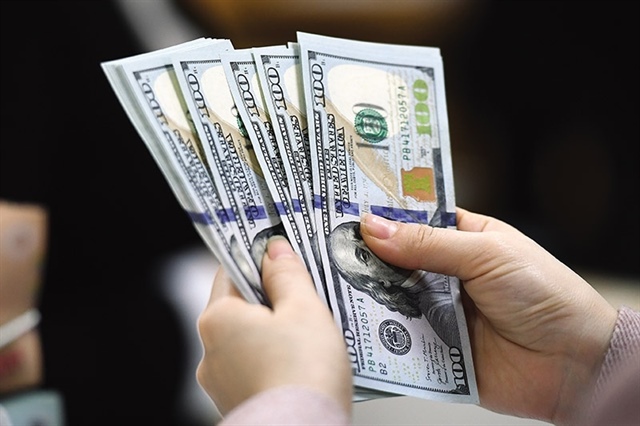|
Experts ponder exchange rate prospects for 2025
The VND-USD exchange rate has been fluctuating continuously throughout 2024, setting record highs in the final week of the year. The exchange rate pressure is expected to persist into 2025 as new variables come into play.
By the end of December, the VND-USD exchange rate in the domestic market had risen approximately 4.5 per cent, slightly below the USD Index's 5.4 per cent hike.

Photo: baodautu.vn
|
Despite the US Federal Reserve cutting interest rates three times since September, representing a 1 per cent reduction, the USD Index remained consistently high.
This exchange rate pressure, coupled with rising import-export demand at year-end, has placed significant strains on businesses.
Key factors driving the exchange rate’s surge include President Donald Trump's electoral victory, a spike in year-end foreign currency demand, and the State Treasury's increased USD purchases to meet debt obligations.
Nonetheless, Vietnam remains one of the most stable currencies in the region. Measures implemented by the State Bank of Vietnam (SBV), such as issuing treasury bills, foreign currency interventions, and managing interbank interest rates, have effectively mitigated major shocks.
According to Phan Dung Khanh, Investment Advisory director at Maybank Investment Bank, the SBV has managed the exchange rate efficiently in 2024, with the VND's depreciation against the USD being much milder compared to other regional currencies.
"The central bank has managed the interest rate-exchange rate puzzle to both ensure stability of the economy and support growth targets," said Khanh.
Meanwhile, Tran Thi Khanh Hien, head of Research at MB Securities, opined that the significant depletion of foreign reserves in 2024 makes the exchange rate more vulnerable to USD shocks.
Moreover, Vietnam's continued inclusion on the US watch-list for currency manipulation adds further challenges for the SBV in devising market supportive policies.
"The scope for Vietnam's monetary policy is narrowing under the pressure of a strong dollar and the risk of further US investigations into currency manipulation," Hien said. "In this context, the SBV may need to adopt a more cautious monetary policy stance to ensure exchange rate stability and avoid excessive monetary easing."
The USD Index is expected to remain at its current elevated level in 2025. Against this backdrop, Tran Hoang Son, director of Market Strategy at VPBankS Research, forecasts that the exchange rate will likely rise by around 3 per cent in 2025, reflecting milder volatility compared to this year.
However, analysts warn of potential variables that could drive the dollar higher.
While investors anticipate two additional Fed rate cuts in 2025, there is also the possibility these reductions might not materialise, which would bolster the US currency.
Furthermore, any stringent tariff policies introduced by the incoming administration could add upward pressure on the dollar.
Domestically, exchange rate increases may also stem from speculative foreign currency trading, especially if the interest rate difference between the USD and VND widens.
Pham The Anh, head of Economics Faculty at National Economics University, emphasised that exchange rates have now been heavily influenced by trade deficits and interest rate differentials between Vietnam and global markets.
"Previously, Vietnam had managed trade deficits effectively, achieving favourable outcomes through trade surpluses. However, rising interest rate differentials have since emerged as a destabilising factor, causing capital outflows from the market. As such, regulators have been recommended to closely monitor these differentials to implement timely interventions," said Anh.
Currently, exchange rates at banks are pegged at VND25,530 per USD on the selling side, marking one of the highest historical levels to date.
VIR
|